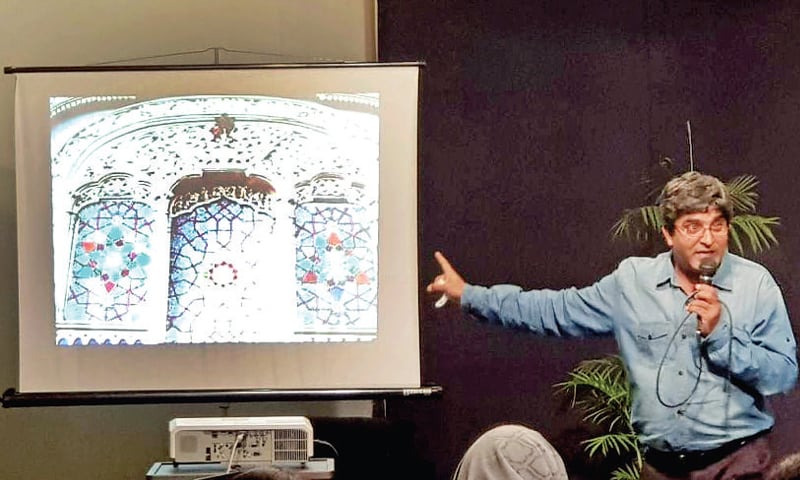ISLAMABAD: A muzakra session that featured a detailed discussion on the various perspectives and aspects of Taazia was hosted on Thursday by Lok Virsa’s research section.
The session was titled Taazia: A Visual Metaphor of the Religious Tolerance in South Asia.
Visual anthropologist Prof Dr Ghulam Abbas, the speaker for the muzakra, gave a detailed discussion that explored and discussed some key features about Taazia, including its introduction, its historical and cultural background in South Asia, the various forms of Taazia in different cultures, the art and craftsmanship of Taazia and the form of Taazia and local architecture.
Deputy Director Research Zobia Sultan said the muzakra was held with special reference to the month of Muharram. “Taazia makes the most prominent part of the visuals of the processions and events of Muharram. Most importantly, Taazia has a unique and rich history in the region of subcontinent,” she said.
She added that the muzakra would only discuss the craftsmanship cultural aspects of Taazia, and not its religious aspects.
Dr Abbas began his discussion with an introduction of Taazia, which he described as an Arabic word with different meanings for Shias, Sunnis and Hindus. For the Shia community, it means the janaza of Imam Hussain, for Sunnis it is condolence, and for Hindus it is the God of death.
He said Muharram rituals were first performed publicly in Baghdad in 963 AD. He said the history of Taaziadari, or keeping Taazia, in Asia and Hindustan is traced back to the period of Timur who invaded India in 1398 AD.
Timur built the first ever Taazia when he returned to Samarkand from a pilgrimage to Karbala. In the late 15th century, Shiaism was given official patronage in India, and it was Yousuf Adil Shah of Bijapur who established the Shia doctrine in his dominions, he said.
In India, Sunni and Shia communities performed Muharram rituals together, he said, adding: “In fact, it was the only religious ritual that was celebrated in India.”
Dr Abbas said that because of the diversity of cultures in Muslim countries, traditions of azadari also vary country-to-country and culture-to-culture.
As the people of the subcontinent adopted Islam and began to commemorate the event of Karbala, they established their own traditions of azadari – performances of all Muharram rituals in general of which Taaziadari is one aspect – according to their diverse cultures, he said.
He said that there are three types of Taazias: silver or metallic, wooden, and paper-bamboo. There are however a variety of Taazias made with different materials, including wood, flowers and bangles, according to the local culture.
Discussing regional and local architecture, Dr Abbas said Chiniot is home to the oldest and finest Taazias in the Indo-Pak region.
“Due to the culture and environment, Taazias are made with wood and it is a kind of master craftsmanship there. This Taazia-making has nothing to do with religion, as there are 10 licensed Taazia makers and eight of them are Sunnis.
“The situation is the same in Hyderabad and Multan, where the majority of Taazia makers are Sunnis,” he said.
Published in Dawn, September 28th, 2018













































Dear visitor, the comments section is undergoing an overhaul and will return soon.